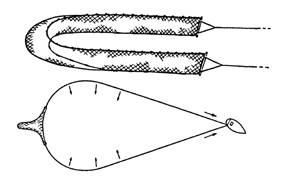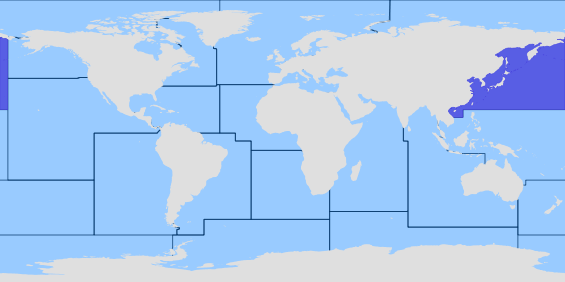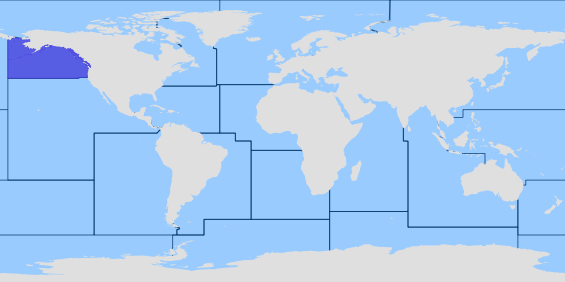engleskiDistinguished uniquely from its congeners in Europe by having trunk and caudal peduncle covered by a complete series of 29-35 bony scutes. Other characters important to separate this species from other species of the genus include posterior edge of scutes crenulated and scutes forming a lateral keel on caudal peduncle. Scutes may be missing on posterior part of trunk in hybrid zone with Gasterosteus gymnurus and in some isolated freshwater populations of northeastern Europe (Ref. 59043). Identified by the 3 to 4 sharp, free spines before the dorsal fin, the pelvic fin reduced to a sharp spine and a small ray, and the series of plates along the sides of the body (Ref. 27547). Gill rakers long and slender, 17 to 25 on the first arch or strictly freshwater forms, 1 or 2 more in anadromous forms; lateral line with microscopic pores (Ref. 27547). The anadromous form is fully plated, with up to 37 plates on the sides and a rather pronounced keel on each side of the caudal peduncle (Ref. 27547). Dorsal spines separated from each other and from the soft-rayed fins, each spine having a reduced membrane attached to its posterior side; anal spine free from rest of the fin; posterior margin of pectorals nearly truncate; caudal truncate to slightly indented (Ref. 27547). Freshwater forms usually mottled brown or greenish; anadromous forms silvery green to bluish black (Ref. 27547). A few isolated populations are black (Ref. 27547). Sides usually pale; belly yellow, white or silvery (Ref. 27547). Fins pale; pectoral rays often have dark dots (Ref. 27547). Breeding males (except for black forms) become brilliant bluish or green with blue or green eyes, and the forward part of the body, especially the breast region, turns bright red or orange (Ref. 27547). Caudal fin with 12 rays (Ref. 2196).
Prikaz prijevoda
Preveo s engleskog od strane BING
Ovaj prijevod je isključivo indikativan: s obzirom na ograničenu kvalitetu izvornika, morfološki opisi su dostupni samo na engleskom jeziku u beta verziji sustava. Višejezične informacije postat će dostupne prilikom budućih objava.
hrvatskiRazlikovati jedinstveno od svoje congeners u Europi od trupa i repne drške pokriva cijelu seriju od 29-35 koštanog scutes. Drugih znakova važno odvojiti ove vrste iz druge vrste roda uključuju stražnjeg ruba scutes crenulated i scutes formira bočni kobilice na repnoj drške. Scutes svibanj biti nedostaje na stražnjem dijelu trupa u hibridne zone sa Gasterosteus gymnurus i neki izolirani slatkovodne populacija sjeveroistočne Europe (orig. 59043). Prepoznaje se po 3-4 oštro, bez bodlje prije leđna peraja, prsni peraje svesti na oštrim kralježnicu i malo zraka i niz ploče duž strane tijela (rif. orig. 27547). Gill rakers duge i vitke, 17 do 25 na prvi luk ili strogo slatkovodni oblici, 1 ili 2 više u anadromous oblika; bočne linije s mikroskopske pore (rif. orig. 27547). Anadromous oblik je potpuno pozlaćen, do 37 ploče sa strane i prilično izražen kobilice na svakoj strani repne drške (rif. orig. 27547). Leđne bodlje odvojeni jedni od drugih i od meke Manda peraje, svaki kralježnice ima smanjenu membranu vezan za svoje stražnje strane; Analni kralježnice bez ostatka peraja; stražnji rub prsa gotovo skratiti; repne skraćivanje da malo uvučen (rif. orig. 27547). Slatkovodni oblici obično išaran smeđe ili zelenkaste; anadromous oblici srebrno zelena do plavkasto crne (rif. orig. 27547). Nekoliko izoliranih populacija su crne (rif. orig. 27547). Strane obično blijedo; trbuh žuto, bijelo ili srebrno (rif. orig. 27547). Peraje blijedo; prsni zrake često imaju tamne točkice (rif. orig. 27547). Uzgoj mužjaka (osim crne forme) postati briljantan plavkasto ili zelena s plavim ili zelenim očima, a prednji dio tijela, posebno regiji dojke, postane jarko crvene ili narančaste (rif. orig. 27547). Repne peraje sa 12 zraka (Ref. 2196).














